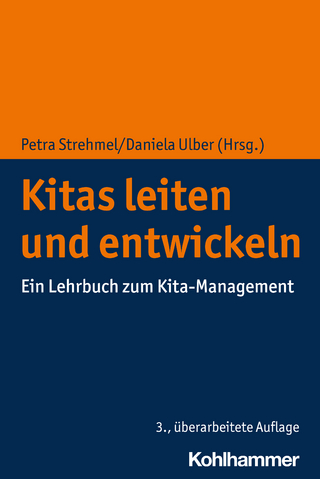
Impact of Television Advertisement on Purchases made for children
Anchor Academic Publishing (Verlag)
978-3-95489-886-2 (ISBN)
Ms. Vashima Veerkumar completed her bachelor's in 2006 from Sophia Girl's College and Master's in 2008 with specialization in Family and Community Resource Management from The M. S. University of Baroda. At present, she is pursuing her Ph.D from The M S University of Baroda, Dept of Family and Community Resource Management, Faculty of family and community science. She has an excellent academic record with several awards to her name including best outgoing trophy in degree course. She has attended and presented paper at various national & international level conferences and has 3 international and 4 national publications in her name.
Dr. Neerja Jaiswal, Head of Department in the Department of Family and Community Resource Management, Faculty of Family and Community Sciences, The Maharaja Sayajirao University of Baroda, Vadodara has a teaching experience at UG, PG and PhD level for 28 years. She is a recipient of V.C. Bronze Medal and Merit Scholarship at B.Sc. (Home) Honors and M.Sc. (Home). Dr. Neerja Jaiswal has guided 20 P.G. dissertations. Two PhD. Dissertations are in process under her guidance. Dr. Jaiswal has authored 6 books and has more than 30 research publications to her credit. She has presented papers in more than 100 International and National conferences and seminars. Dr. Jaiswal is a life member of six professional bodies. Dr. Jaiswal has undertaken three major projects funded by national agencies, New Delhi. She has undertaken an additional charge of Officer on Special Duty (Chief Accounts Officer) in The Maharaja Sayajirao University of Baroda.
Text Sample:
Chapter INTRODUCTION:
The basic task of marketing is the delivery of product(s) to the family as consumers so that their needs are fulfilled and organizational objectives are also achieved. Marketing mix is the process of designing and integrating various elements of marketing in such a way as to ensure the achievement of enterprise objective of persuading consumers. The elements of marketing mix are classified under seven heads as product, price, place promotion, people, process and physical evidence. Thus, marketing mix is said to be a combination of 7 P's. Decisions relating to the product include product designing, packaging and labeling and varieties of a tangible object or an intangible service that is mass produced or manufactured on a large scale with a specific volume of units. The price is the amount a family pays for the product which is determined by a number of factors including market share, competition, material costs, product identity and the family's perceived value of the product. Place represents the location where a product can be purchased. It is often referred to as the distribution channel that includes any physical store as well as virtual stores on the Internet. Place is nothing but how the product takes place or create image in the mind of customers. People refer to the family as customers, employees, management and everybody else involved in it. It is essential for the family to realize that the reputation of the brand that is involved with is in the people's hands. The success of any marketing strategy depends on the extent the families are persuaded towards the product and service which is only successfully possible through effective promotion. Process refers to the methods and process of providing a service. Hence it is essential to have a thorough knowledge on whether the services are helpful to the customers, whether they are provided in time, or informed in hand about the services. Physical evidence refers to the experience of using a product or service. When a service goes out to the customer, it is essential to help them see what they are buying or not. Brochures, pamphlets serve the purpose of physical evidence.
Promotion represents all of the communications that a marketer may use in the marketplace. Promotion refers to using methods of communication with two objectives firstly, informing the existing and potential consumers about a product, and secondly, to persuade consumers to buy the product. It is a most important element of marketing mix. In the absence of communication, consumers may not be aware of the product and its potential to satisfy their needs and desires. Various tools of communication form part of promotion mix. Companies decide which tool(s) can be used for the relative importance attached to the various methods and also while concentrating on the element of 'promotion' in marketing mix. The four components of promotion-mix are advertising, personal selling, sales promotion and public relations amongst which advertising specifically in audio visual form, proved to be the most effective ones(TOI, 2010).
Television advertisement: as an effective tool for family purchases
The term advertising is derived from the original Latin word 'advertere' which means 'to turn' the attention. Every piece of advertising turns the attention of the reader, listeners, viewers or the onlookers towards a product, service or an idea. Advertising is an impersonal form of communication for which the seller pays in order to promote a physical product or service. It may be in print forms like newspapers and magazines, in audio form as on the radio and other similar methods, in audio-visual forms such as the Television, cinema screen. Virtually any medium can be used for advertising but one of the most effective forms of advertisement is television advertisement which is generally considered the most effective mass-market advertising format. It is reflected by the high prices TV net
| Erscheint lt. Verlag | 16.9.2016 |
|---|---|
| Sprache | englisch |
| Maße | 155 x 220 mm |
| Gewicht | 252 g |
| Themenwelt | Sozialwissenschaften ► Pädagogik ► Sozialpädagogik |
| Sozialwissenschaften ► Soziologie ► Allgemeine Soziologie | |
| Schlagworte | Marketing |
| ISBN-10 | 3-95489-886-1 / 3954898861 |
| ISBN-13 | 978-3-95489-886-2 / 9783954898862 |
| Zustand | Neuware |
| Haben Sie eine Frage zum Produkt? |
aus dem Bereich


